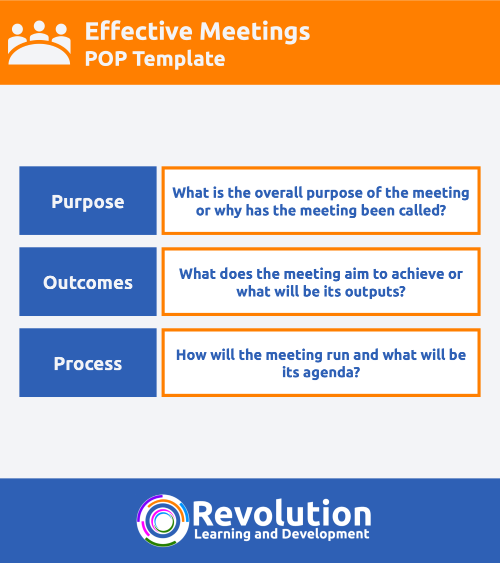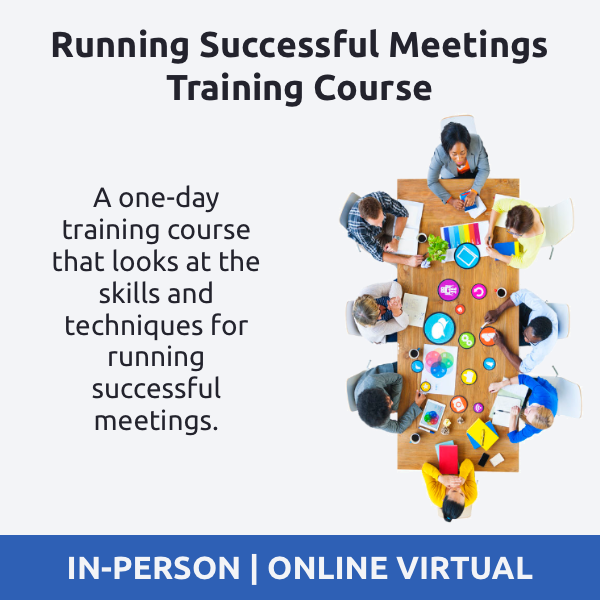Background
In this article, we look at how to invite people to a meeting. Inviting people to a meeting is something that many people don’t give a great deal of thought to. We often send a calendar invite with an agenda, some brief information. In many cases, this invite is blank. We then wonder why people don’t seem engaged when they get to the meeting. This is because they don’t know why they are there.
If we want people to fully engage with our meeting, we need to give much more thought to inviting people to a meeting. This post looks at a simple, but a highly effective template for inviting people to a meeting called POP.
Inviting People to a Meeting
If you put yourself in the shoes of a person who has been asked to attend a meeting – what would you want to know about that meeting? You would probably want to know:
- What is the meeting about
- What time does the meeting start and end
- How long will the meeting last for
- Who else will be there
- What is the purpose of the meeting
- What does the meeting aim to achieve
- What’s in it for me/what value do I get from it
This seems a lot. But, if you have these questions when you are invited to a meeting, you can assume that others that you are inviting to a meeting will have exactly the same questions. If this information is not provided, you have the potential for people to be disengaged before they even arrive.
Inviting people to a meeting the correct way will lead to you having a more effective meeting with engaged participants.
A Template For Inviting People to a Meeting
A great way to get your meeting invite right is to use a simple template called POP. You can create a simple template that you attach to a meeting invite or include the information from POP inside of your meeting invite.

- Purpose
- Outcome
- Process
Purpose
The first part of our template for inviting people to a meeting is the purpose. Those attending the meeting need to know what its purpose is. You might define this as the aim of the meeting. This should be brief, maybe one or two lines that will provide those invited with a succinct summary of what the meeting is about.
An example of a meeting purpose statement might be:
“The purpose of this meeting is to discuss the recent marketing campaign that was sent out to customers and to agree on actions on how we follow up on the data that we received.”
Outcomes
The second part of our template for inviting people to a meeting is the outcomes. Those attending the meeting need to know what they are going to get out of the meeting. A meeting is only classed as a successful meeting if the time spent in the meeting generates some kind of output. This is what the outcomes should demonstrate.
We need to show those people that we are inviting to the meeting that there is some value in attending. This could be value to the organisation, value to the customer or value to them individually (what’s in it for them).
Outcomes should be written as statements, similar to how training objectives are written. They should start with “by the end of this meeting we will”. We then add statements to this that show what the outcomes will be. You could use words like:
- Have agreed
- Decided
- Put together
- Built
These are just a few examples, but the words you use must show the intent of action or direction otherwise those attending will not buy into the idea of coming along to the meeting.
Here are some examples of meeting outcomes statements. By the end of this meeting we will
- Have reviewed the marketing campaign and its results
- Agreed on how to use the data to follow up on new contacts
- Have a list of actions for each team to take away and put into place
Process
The final part of our template for inviting people to a meeting is the process. Those attending the meeting want to know how the meeting will run. The process part of POP should include:
- The agenda items
- How long each point has been allocated
- Who is leading that part
- Which of the outcomes is this item linked to
Why Use a Template to Invite People to a Meeting?
You can see from the points above why giving some thought to inviting people to a meeting is key to the success of a meeting. If we don’t provide the details, we don’t get the engagement and people may see your meeting as a waste of time.
Spending some time thinking about your meeting invite and using a template for your meeting invite will ensure that people attend your meeting fully prepared, engaged and ready to participate to help achieve the outcomes of the meeting.
Further Learning
If you would like to learn more about inviting people to a meeting or how to run successful meetings both online and in-person, you may find attending a running successful meetings training course will help. Take a look at our Running Successful Meetings Training Course for more details.






